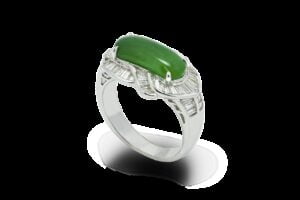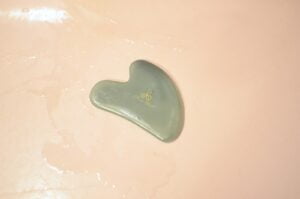Which Country Has The Best Jade In The World?
Which Country Has The Best Jade In The World? Ah, the allure of jade, the gemstone that has captivated hearts for centuries. But which country has the privilege of claiming the title of having the best jade in the world? As we embark on this jewel-filled journey, we will explore the origins, qualities, and cultural significance of jade, and finally answer the age-old question that has piqued curiosity in the minds of gem enthusiasts worldwide. So buckle up, my friend, for an illuminating adventure into the realm of jade.
1. Introduction
Jade, with its stunning green hue and legendary allure, has captivated cultures around the world for centuries. This precious gemstone has been used in jewelry, artifacts, and even as a symbol of wealth and power. But which country produces the best jade in the world? In this comprehensive article, we will delve into the various types of jade, the historical origins of this magnificent stone, the conditions required for exceptional jade, and the major jade-producing countries. By the end, you’ll have a deeper understanding of the world of jade and the countries that play a significant role in its production.
2. What is Jade?
Jade is a gemstone that is prized for its vibrant green color, durability, and beauty. It is actually composed of two different minerals, nephrite and jadeite. Nephrite is known for its softer texture and is often found in shades of green, white, and gray. Jadeite, on the other hand, is rare and highly valued for its intense and vivid green color. It is also much harder than nephrite, making it more suitable for intricate carvings and jewelry.
2.1 Definition of Jade
Jade is a term used to describe both nephrite and jadeite, two distinct minerals that are often considered under the umbrella term of “jade.” Nephrite is a calcium-rich amphibole mineral, while jadeite is a pyroxene mineral. Both are classified as gemstones and are highly sought after for their ornamental and decorative purposes.
3. Importance of Jade
3.1 Cultural Significance
Jade holds immense cultural significance in various civilizations across the globe. In Chinese culture, jade is associated with prosperity, protection, and good fortune. It is believed to have a harmonizing effect on the body, mind, and spirit, and is often used in ceremonies, talismans, and amulets. In Mesoamerican cultures such as the Mayans and Aztecs, jade was considered a sacred stone and highly revered. It was believed to have mystical and healing properties and was used in rituals and as offerings to the gods.
3.2 Value and Demand
The value and demand for jade have skyrocketed in recent years, with collectors, investors, and enthusiasts seeking out high-quality pieces. The scarcity and rarity of fine jade, especially jadeite, have led to an increase in its value, making it a highly sought-after gemstone. The demand for jade comes from both the jewelry market and the collectors’ market, where there is a strong desire for unique and exceptional pieces. As a result, the price of high-quality jade has been steadily rising, making it a valuable and lucrative investment.
4. Different Types of Jade
There are two main types of jade: nephrite and jadeite. Each type has its distinct characteristics and qualities.
4.1 Nephrite
Nephrite is the more common and readily available type of jade. It is often found in shades of green, white, and gray and has a softer and less dense texture compared to jadeite. Nephrite is known for its durability and toughness, making it suitable for carving intricate designs and sculptures. It has been used for thousands of years in ancient civilizations and is still highly valued today for its cultural and aesthetic significance.
4.2 Jadeite
Jadeite is the rarer and more valuable type of jade. It is highly prized for its intense and vibrant green color, which is often described as “imperial green.” Jadeite is much harder and denser than nephrite, allowing for more detailed and intricate carvings. The finest quality jadeite is translucent and exhibits a rich, vibrant color that is unmatched by any other gemstone. It is the most desirable and sought-after type of jade in the world.
5. Historical Origins of Jade
5.1 Chinese Jade
China has a rich history when it comes to jade. The Chinese have been using jade for over 5,000 years, making it one of the oldest civilizations to have embraced the stone. Jade was not only used for ornamental and decorative purposes but also held great spiritual and symbolic value in Chinese culture. It was believed to bring good luck, ward off evil spirits, and represent strength and immortality. The Chinese also developed advanced techniques for carving and shaping jade, creating intricate and elaborate designs that are revered to this day.
5.2 Mesoamerican Jade
Mesoamerican civilizations, such as the Mayans and Aztecs, also had a deep appreciation for jade. Jade was considered a sacred stone and was intricately woven into the fabric of their religious and cultural practices. It was highly valued for its beauty and symbolic significance, representing fertility, protection, and the divine. Jade artifacts, including masks, jewelry, and ceremonial objects, have been unearthed from ancient Mesoamerican sites, giving us a glimpse into the importance and reverence placed on this precious stone.
5.3 Jade in Other Cultures
Jade has also played a significant role in other cultures throughout history. In ancient Egypt, jade was highly esteemed and used in jewelry, amulets, and religious rituals. It was associated with youth, beauty, and protection. In Persia (present-day Iran), jade was considered the “stone of immortality,” and it was believed that jade could ward off evil spirits and protect against disease. In various Southeast Asian cultures, such as the Khmer Empire and the Javanese Kingdoms, jade was used in rituals, religious ceremonies, and as a symbol of wealth and status.
6. Conditions for Exceptional Jade
The formation of exceptional jade requires specific geological, mining, and environmental conditions. These factors play a crucial role in determining the quality and characteristics of the jade.
6.1 Geological Factors
Jade forms in metamorphic rocks under specific temperature and pressure conditions. It requires the presence of minerals such as pyroxene and amphibole, which are essential for jade’s composition and color. The geological processes involved in the formation of jade can take millions of years and require precise conditions to produce the finest-quality gemstones.
6.2 Mining Techniques
Mining techniques also play a significant role in the quality of jade that is extracted. Careful extraction methods are required to prevent damage to the jade during the mining process. Traditional methods, such as hand mining, can be time-consuming but may result in better quality jade due to the careful handling and selection of the stones. Modern mining techniques, such as mechanized excavation, can increase production but may result in a lower overall quality of jade.
6.3 Environmental Factors
The environmental conditions in which jade forms and is mined can affect its quality. Factors such as temperature, humidity, and exposure to elements can impact the appearance and durability of the jade. Jade that is found in more extreme and challenging environments may exhibit unique and desirable characteristics due to the harsh conditions in which it was formed.
7. Jade Production Worldwide
Jade is produced in several countries around the world, with each country contributing to the global supply of this precious gemstone.
7.1 Major Jade Producing Countries
China is the largest producer of jade in the world, accounting for a significant portion of global production. Other significant jade-producing countries include Myanmar (Burma), Russia, Canada, and Guatemala. These countries have rich deposits of jade and have a long history of jade mining and production. Each country also offers unique characteristics and qualities in its jade, making them desirable in their own right.
7.2 Comparison of Jade Quality
The quality of jade can vary significantly depending on the country of origin. Chinese jade is renowned for its exquisite craftsmanship and attention to detail. It is often revered for its cultural significance and historical significance. Myanmar jadeite, also known as Burmese jade, is highly valued for its intense and translucent green color. Russian jade is known for its deep and vibrant green color, often referred to as “Siberian green.” Canadian jade is prized for its distinct color variations, ranging from pale green to vibrant blue-green. Guatemalan jade is characterized by its deep, forest-green color, often referred to as “Guatemalan green.” https://www.gia.edu/gia-bangkok
8. China: The Jade Giant
8.1 Large-scale Jade Production
China dominates the global jade market, both in terms of production and consumption. The country has a long history of jade mining and production and is renowned for its expertise in jade carving and craftsmanship. China’s vast reserves of jade deposits and its skilled artisans have made it a leading player in the jade industry. Large-scale mining operations and advanced technologies have allowed China to extract and process significant quantities of jade each year.
8.2 Different Types of Chinese Jade
Chinese jade comes in various types and colors, each with its unique characteristics and qualities. Some of the most popular types of Chinese jade include Hetian jade, known for its white and green tones and its cultural significance; Xiuyan jade, characterized by its emerald green color and delicate patterns; and Yinglun jade, a high-quality nephrite jade with a creamy white color and fine-grained texture. These different types of Chinese jade offer collectors and enthusiasts a wide range of options to choose from.
9. Myanmar: Land of Imperial Jade
9.1 The Impact of Myanmar Jadeite
Myanmar, formerly known as Burma, is renowned for its high-quality jadeite. The country’s jade deposits, particularly in the Kachin State, have attracted significant attention from the global gemstone market. Myanmar’s jadeite, often referred to as Burmese jade, is highly valued for its intense and vibrant green color. The demand for Myanmar jadeite has skyrocketed in recent years, with rising prices and a surge in both local and international buyers.
9.2 Evaluating Myanmar Jade Quality
Myanmar jadeite is evaluated by its color, translucency, texture, and overall appearance. The most valuable and desirable jadeite is known as “imperial jade,” characterized by a vivid green hue and excellent clarity. The highest quality jadeite is translucent, allowing light to pass through, revealing the gemstone’s inner beauty. The texture of the jadeite should be smooth and free from any visible flaws or impurities. Myanmar’s jadeite is highly regarded and fetches top prices in the international market.
11. Conclusion
Jade, with its rich history, cultural significance, and natural beauty, continues to mesmerize and captivate people around the world. From ancient civilizations to modern collectors, jade has held a place of distinction and value. While different countries produce jade of various qualities, China and Myanmar stand out as major players in the global jade industry. China’s vast reserves and expertise in jade carving have made it a dominant force, while Myanmar’s exceptional jadeite has captivated the market with its vibrant green color. The world of jade is vast and diverse, offering a wide range of options for collectors, jewelry enthusiasts, and those interested in exploring the beauty and mystique of this extraordinary gemstone. https://mauragemsandjewellery.org/how-can-you-tell-a-high-quality-ruby/



